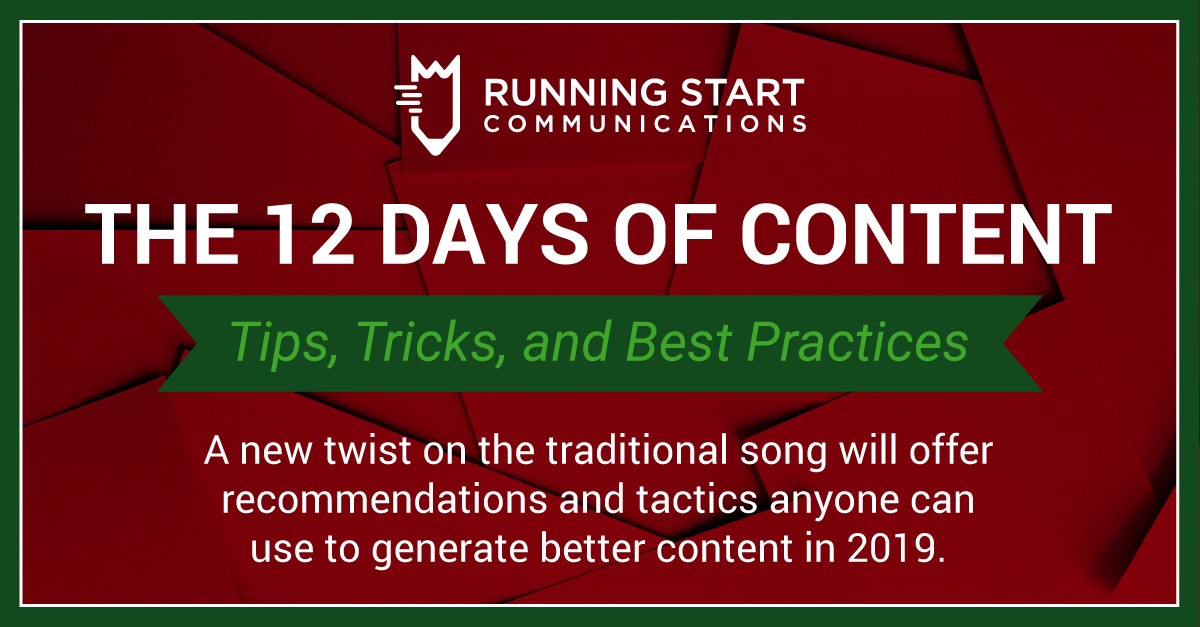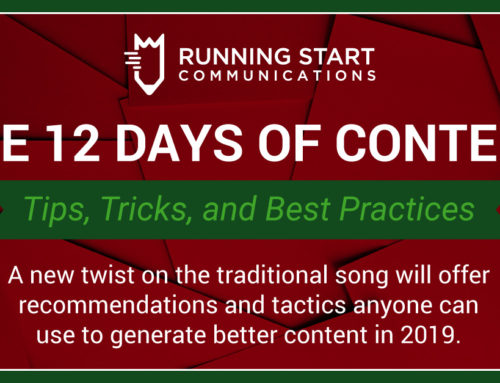
On the third day of “Content,” a random writer gave to me …
♫ On the first day of Content (Tips, Tricks, and Best Practices), a random writer gave to me … one key point for creating content.♫
♫ On the second day of Content, a random writer gave to me … two best practices for developing an effective content marketing strategy. ♫
♫ On the third day of Content, a random writer gave to me … three tactics to engage three different types of reader.♫
Today is Day 3 of “The 12 Days of Content (Tips, Tricks, and Best Practices), so we are going to take a look at three different types of readers, and what we can do to generate content to engage each group.
Why three types of readers? Because of something known as the “30-3-30” rule. This concept was developed by a professor of communications in the mid-1900s, who theorized that there are three different styles when it comes to reviewing marketing materials:
- 30: This first group will spend 30 seconds or less with your content. Realistically, this is just a quick skim of the headline and any graphics that may jump out at them.
- 3: The second type of reader will review marketing materials for three minutes or less. This is still not enough time to digest it all, but they would be able to scan headlines, subheads, graphics, captions, and a bit of body copy.
- 30: The third group will spend 30 minutes reading the entire document from start to finish. (Note: I believe that in 2018, it’s probably unlikely that 30 minutes is still accurate, but the important takeaway is that one-third of your audience is still willing to read all of your content.)
So what can we do to make sure our content is giving each group what they’re looking for?
Three tips to appeal to each audience
The 30-seconders:
- Make sure your headline communicates the strongest benefit possible. Don’t settle with headlines that are just product names or a bland label of what’s to come.
- Break up content with bullets, or better still, use callouts, sidebars, pull quotes, and graphics to visually convey important information. Remember, this group will never dig into the body copy, so do all you can to make it pop.
- Create materials specifically for this audience, even if it wasn’t part of the original plan. If they’ll never read a white paper, why not produce a video or infographic that communicates the same information? Your overall audience will never object – and may thank you for it.
The 3-minuters:
- Make your content more visually appealing and engaging. Keep sentences, paragraphs, and sections as short as possible. For example, I try to keep sentences to 25 words, paragraphs to five lines, and sections to three or four paragraphs. Even these may seem too long for some formats and readers.
- Hook your reader quickly. Lead with the specific challenge they face or benefit they’re trying to accomplish. Don’t build to this information because you’re going to lose them quickly.
- Make your copy more personable and conversational. Be direct and engaging. Remember, 90% of the content out there looks and sounds the same, so this is an opportunity to stand out and let them know you’re different.
The 30-minuters:
- Give them more content. Not necessarily all in one place, all in one time, but generate serialized content that they can continue to absorb. This can include a blog series, white papers, technical materials, detailed case studies, and more.
- Give them third-party content such as analyst research, industry reports, and survey results. You may not have access to these, so if not, look to include research and statistics in your materials.
- Give them interactive content. Remember, this audience likes to be involved and wants to understand the full implications to selecting your product or service. Consider ROI calculators, forecasting tools, or other ways to model and estimate outcomes. They’ll love it.
Let’s all say goodbye to one-size-fits-all content marketing, and do all we can to generate content that works for different types of readers.
I hope you’re enjoying this blog series, and that this information is helpful. I also hope you’ll check out tomorrow’s article, which will focus on four elements any good content should include.


Leave A Comment